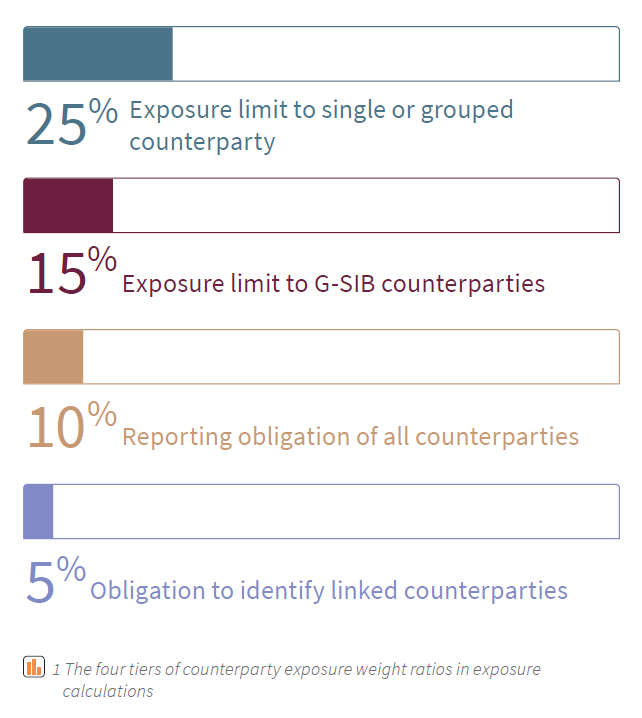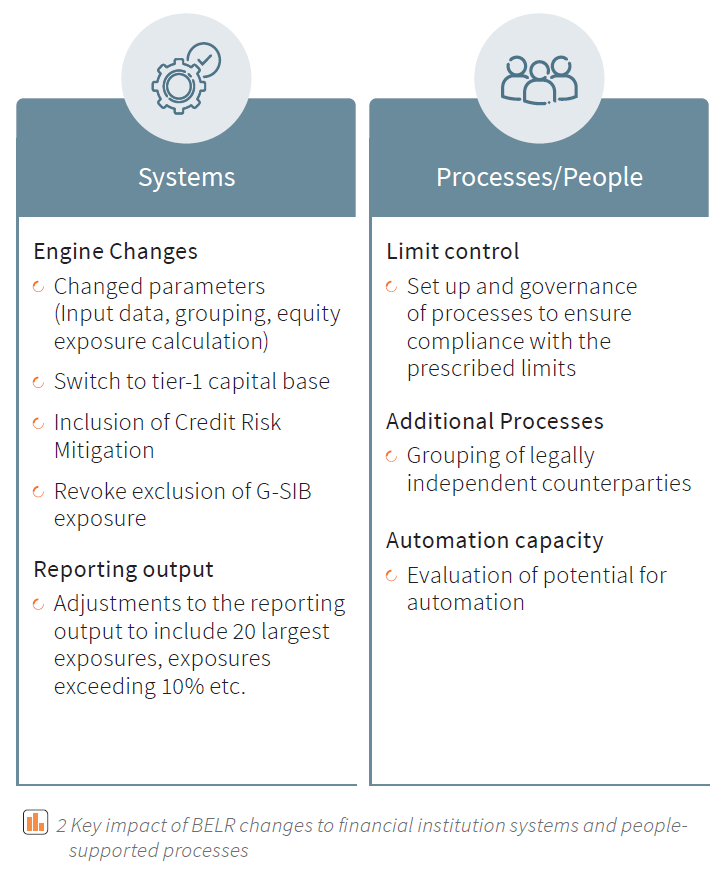Since 2012, the Basel Committee has been working on a regulatory framework to tackle deficiencies uncovered by the Great Financial Crisis. This work led to the new Basel III standards which include inter alia guidelines for capital floors.
In July 2019, the Hong Kong Monetary Authority (HKMA) outlined new banking exposure limit rules (BELR) according to these recommendations as one of the first supervisory authorities. After the six-month grace period ended on December 31st, 2019, all authorised institutions (AIs) must comply with the rules and maintain exposures below the prescribed limits. The new rules change how banks assign and measure exposures hence the data generation and reporting processes had to be overhauled to match these more stringent requirements. Despite the end of the deadline last December, there’s still room to further enhance exposure management. In particular, many banks have instituted stopgap measures to comply, limiting their sales potential to meet regulatory expectations or adding significant manual processes and lowering operational capacity.
This article first gives an overview of BELR itself, including how these regulations change the calculation guidelines, consider risk mitigation, and define economic dependence. Second, our impact assessment on banks’ operations displays the additional effort accompanying the rule changes. Finally, we explain how Synpulse can support you in adjusting processes to meet the regulatory requirements most efficiently.
Overview on banking exposure limit rules
What has changed?
The new rules give more detailed guidelines on how to capture and calculate equity exposure to increase the visibility of counterparty default risks. Below is a summary of the major changes in regulation:
- Calculation base for exposure ratios was changed from accepting overall capital to only Tier 1 capital.
- Provision of detailed rules for capturing equity exposure and recognition of widely used risk mitigation practices.
- Economic dependence is included as a new factor in defining groups of connected counterparties.
- Interbank exposures are no longer exempted.
What is it about?
The new BELR regulation goes into further depth than previous regulations in multiple areas, one of which is the calculation of equity exposure. The BELR sets out computation standards to measure exposure for individual product classes and guidelines on how to classify different exposures within trading and banking books. Where uncertainties may occur, HKMA sets out multiple options for more prudent calculations of exposures. One example where different levels of prudency for calculations apply is in cases where information on underlying assets within a collective investment scheme are not shared in a timely manner with the institution.
The previously granted exemptions for assets under underwriting contracts, from sovereign entities or acquired to satisfy debts due are still in place. Merely the exemption of exposure against other banks is excluded in the new rules. Exposure amounts might also be reduced in case common risk mitigation techniques as defined in the Capital Rules were applied. Furthermore, institutions still enjoy the option to offset exposures within each of their books but not across books.
One of the aforementioned fundamental changes affects the grouping of counterparties. The previous grouping through ownership such as a common owner, being subsidiaries of each other or belonging to the same holding still apply for the new BELR. But the rules were extended for cases were the counterparty exposure exceeds 5%, to further include counterparties that are economically dependent to the first counterparty. The criterion of economic dependence is fulfilled if a counterparty is likely to encounter financial problems (funding, repayment issues) in case another counterparty connected to the first would undergo such problems. This definition goes beyond ownership and includes dependencies of business operation in regard to revenue, shared customers, supplies or funding.
In summary, an overview of the four new tiers of exposure ratio and their implications:

Impact of the new rules
The implementation of the new rules in reporting require larger efforts and enhanced system capabilities from AIs regulated under the HKMA. Institutions require the expertise to set up new identification and calculation processes and evaluate where system enhancements are necessary. But the impact goes beyond considering new equity exposure calculation methods in the risk engine. It includes changes of the governance structure and training of frontline staff who are obliged to stay within the limits specified on their scorecard but are not yet acquainted with the concept economic dependence. To address these broad areas of impact and potentials for improvement, Synpulse has categoried the impact into the two main areas of Systems and Processes/People.

How Synpulse can help
Synpulse has significant experience in guiding clients of all sizes through risky regulatory change processes. This includes ensuring that the change is carried out all the way from transforming backend systems to setting up risk controls and respective operational procedures all the way up to training front office employees on the new guidelines. Our strong presence in Hong Kong provides insights on various approaches banks and wealth managers have taken to tackle this transition.
While the change in Hong Kong is already underway, there are multiple areas where we see the industry going:
Follow-through implementations of BELR by financial institutions in other jurisdictions, especially in Singapore
BELR change isn’t an initiative independently initiated by the HKMA even though it’s among the first regulators to implement it. Other jurisdictions will implement similar BELR changes in due time. Synpulse has a strong footprint across Asian wealth management with our primary offices in Singapore, and experience working closely with the world’s largest private banks.
Follow-up regulatory reviews by HKMA and training of key staff and management on BELR regulation
Regulatory change is a gradual process, and there are benefits to an AI forecasting what the next developments will be and adjust to that expectation. Implementation reviews by the regulators will further specify the initial guidelines highlighted in the circulars. More importantly, the changes are likely to be more stringent and drive stronger enforcement, internal audit, and management process reviews. To prepare your organiation, we recommend reviewing the financial product sales organiation and processes, credit origination and lending department processes, as well as entity-wide risk functions. After this review, implementing balanced new employee scorecards in alignment with the regulation and maintaining this scorecard for management reporting and compensation discussions as part of the ongoing processes is key to get the whole organiation compliant.
Operationalising the system changes across system to decrease operational costs and support complex cases
Financial institutions place themselves at risk by adopting a gradual approach to these changes, especially if they’re undergoing major transformation. While key risk systems and credit reporting tools have been modified to serve under the new rules, there are vulnerabilities elsewhere. Core systems, workflow tools and alerts and notification dashboards have often not been thoroughly reviewed. This also applies to staff at the front of the credit operation, many of whom haven’t yet been trained or involved in the new risk management process. The challenges are even greater in non-credit functions whose input is crucial for the BELR calculations, such as complex product structuring and fund sales. Examples of this would include where one counterparty fully structures a product around the product of another financial institution. The potential counterparty exposure arising from such undertakings directly impacts the sales effort by increasing complexity and regulatory risk.
Changes to a chained exposure framework represents significant change for financial institutions. There is a need for these changes to be unified and communicated across the organiation, all while becoming standard components of the employee workflow. A sales representative is much less likely to ask for an exception to their individual exposure budget if there are internal, soft penalties for requesting exceptions and it is clearly visible in the working system when they or the bank would go across exposure limits. Setting BELR up in other jurisdictions and strengthening it in Hong Kong in a way that allows the bank to still maintain profitability will be one of the key challenges for banks in the coming years.

